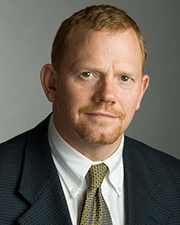Prior to building re-occupancy: Ensure Covid-19 absence - by Stephen Graham of CEA

Corporate Environmental Advisors
The U.S. Centers for Disease Control and Prevention (CDC) bulletin has issued guidance about the novel coronavirus (SARS-CoV-2) that causes coronavirus disease 2019 (COVID-19). In particular, building owners and business operators seeking to re-open or allow tenants and residents back into their facilities, should be aware of the risks and timing associated with COVID-19. CDC defines “community facilities” as non-healthcare facilities including schools, institutions of higher education, offices, daycare centers, businesses, and community centers that do not house persons overnight. Healthcare facilities and households are categorized separately and have different cleanup procedures and standards. Community facilities therefore includes office, retail, hotel, research, warehouse, and other buildings pertinent to the commercial real estate industry.
COVID-19 spreads from person-to-person most frequently from close contact (within about 6 feet, in non-wind conditions), via respiratory droplets, but the CDC states that, “current evidence suggests that SARS-CoV-2 may remain viable for hours to days on surfaces made from a variety of materials. Cleaning of visibly dirty surfaces followed by disinfection is a ‘best practice measure’ for prevention of COVID-19 and other viral respiratory illnesses in community settings.” However, one healthcare facility recently found that COVID-19 remained in an uncleaned room for 17 days. Also, it is “unknown how long the air inside a room occupied by someone with confirmed COVID-19 remains potentially infectious,“ with the concern being the retention time of respiratory droplets lingering in that air space.
The CDC offers two strategies to remove the threat of COVID-19:
• Cleaning, which refers to removing dirt and impurities, including germs, from surfaces. Not that cleaning by itself does not kill germs. However, removing the germs decreases their number and lowers the risk of spreading infection. Soap and a detergent with water are used for cleaning. Note that mechanical action/contact with the surface is needed; the technique of fogging alone, for example, may not alone accomplish sufficient cleaning. Cleaning should address all affected areas such as offices, bathrooms, common areas, shared electronic equipment (like tablets, touch screens, keyboards, remote controls, and ATM machines) especially those frequently touched. Note that surfaces differ in their porosity, so hard, non-porous materials such as metal, glass, or tile differ in treatment from semi-porous (wood, drywall) to porous materials such as carpeted floor, rugs, and drapes. CDC just issued new guidance on April 1, 2020 for cleaning and disinfecting electronics; and
• Disinfecting, which uses U.S. Environmental Protection Agency (EPA)-registered chemicals, or disinfectants, to kill germs on surfaces. As CDC points out, “this process does not necessarily clean dirty surfaces or remove germs. But killing germs remaining on a surface after cleaning further reduces any risk of spreading infection.”
However, it is important to realize that the above two steps, cannot verify the absence of COVID-19; only verification via scientific testing can provide this answer. This third step of verification has a two-part process: field instrumentation testing, and off-site laboratory testing specific to COVID-19.
Therefore, if the owner/operator needs technically (and potentially legally) defensible documentation of the absence of COVID-19, it should engage both a professional cleaner and a verification consultant. It is possible in some settings to obtain just the services of the verification consultant, which are typically one-tenth or less of the cost of cleaning. Note that the verification specialist should not be retained by the cleaner, to avoid a conflict of interest. However, a verification consultant can hire the cleaning firm, and some owners have elected this approach to provide a single point of contact. With this approach, if re-cleaning is needed, the cost is typically not borne by the customer.
One final note: owners/operators have other responsibilities in the cleaning/verification process. They should: 1) educate staff and workers performing cleaning, laundry, and trash pick-up activities on cleaning and disinfection; 2) have policies and personal protective equipment (PPE) for worker safety; 3) conduct or provide training to cleaning staff on the property, prior to work activities.; 4) verify workers are trained on the hazards of the cleaning chemicals used in the workplace in accordance with OSHA’s Hazard Communication standard (29 CFR 1910.1200); and 5) comply with OSHA’s standards on Bloodborne Pathogens (29 CFR 1910.1030), including proper disposal of regulated waste, and PPE (29 CFR 1910.132).
Stephen Graham, PE, LSP is director of environmental risk practice for Corporate Environmental Advisors (CEA), Boston, MA. CEA is a national environmental consultancy serving New England from offices in MA, NH, and ME.
Atlantic Property Management expands facilities maintenance platform: Assigned two new facility management contracts in RI


Connecticut’s Transfer Act will expire in 2026. What should property owners do now? - by Samuel Haydock

Unlocking value for commercial real estate: Solar solutions for a changing market - by Claire Broido Johnson

Tenant Estoppel certificates: Navigating risks, responses and leverage - by Laura Kaplan


 (1).png)







 (1).png)
